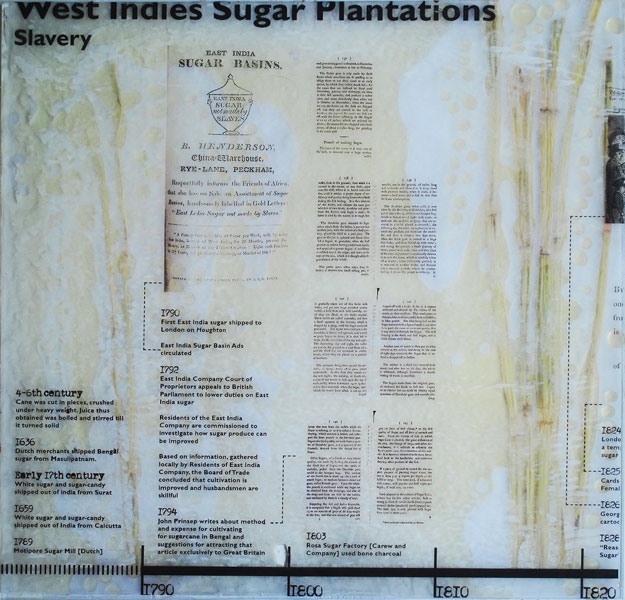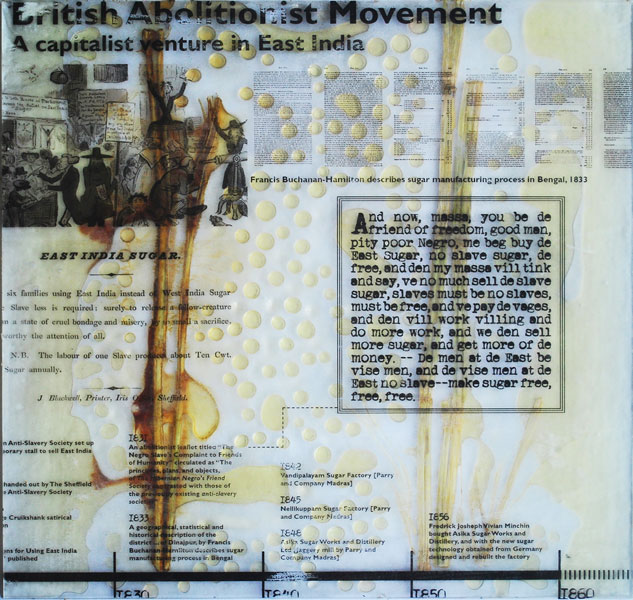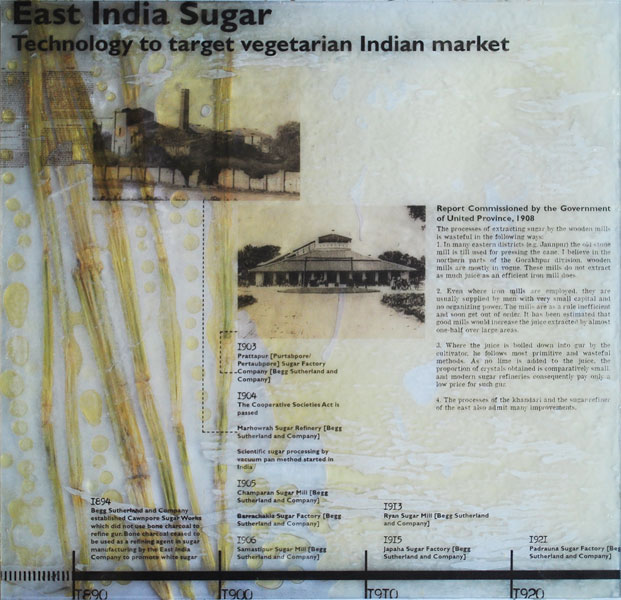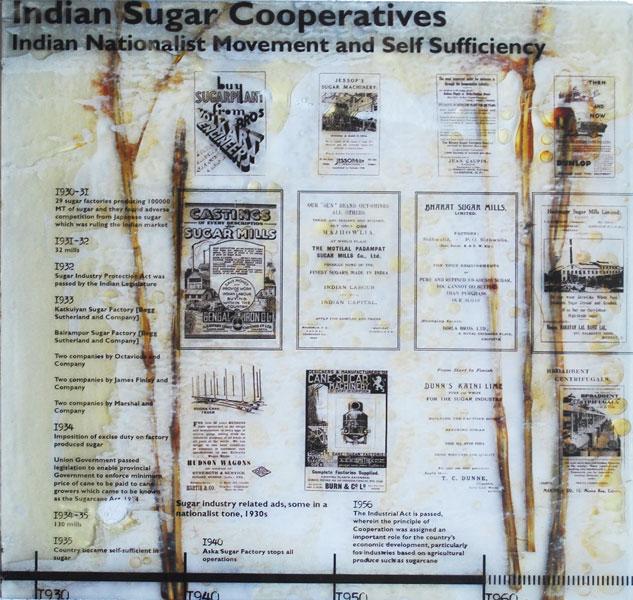2018 | SONAL MITHAL
CURATOR: THE FIRST FORUM ON ASIAN INDUSTRIAL HERITAGE CONSERVATION AND THE INTERNATIONAL SYMPOSIUM OF ON THE FOOTPRINTS OF ASIAN SUGAR HERITAGE HERITAGE
24″ x 24″ x 4
This artwork project will traces the politics behind the establishment of sugar industry in India by the British colonizers with their agenda to create a market among the Indian elite by promoting the whiteness of sugar over the traditional gur or khandsari [unrefined sugar] which were brown in color and mainly became a poor man’s sugar. It further traces the subsequent reversal of British monopoly by local manufacturers at the turn of the twentieth century in India. Some examples of old mills that are explored are Begg Sutherland and Company Mill, Morton Toffee Factory, Parry Sugar Mills,and Modinagar Sugar Mill. The artwork pieces together a timeline of sugar industrial architecturaland manufacturing processes that insisted on deviation from traditional use of bone-charcoal to refine jaggery and create a market for a “white” sugar. The artwork uses material from a contemporary sugar factory such as bagasses, molasses, and caramelized sugar. Bagasses and molasses act as materials under tension while caramel provides the required adhesive and gloss. Additionally, the artwork references traditional lime mortar composition used in the construction of historical buildings across India that uses jaggery and molasses as binding additives to lime. Using these techniques and materials, the artwork becomes a collage of historical texts, archival images of old sugar mills, and timelines representing the sugar industry history of India.




